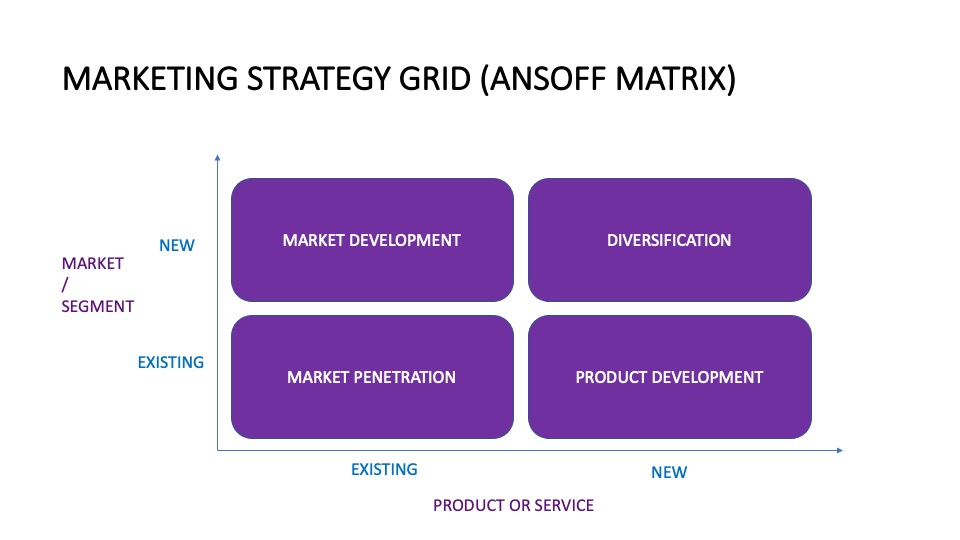Introduction
Marketing objectives are a critical part of any marketing plan, as they help businesses focus their efforts and resources on achieving specific goals. In this blog, we’ll explore how you can define the marketing objectives for your business. I’ll provide some tips, as well as questions to ask when defining your marketing objectives.
Purpose
Simple, better objectives lead to better results – so invest a little thought up front and get some clear marketing objectives written down.
If you take just one thing from this article – align your marketing objectives to your business objectives.
Three areas of focus
Let’s focus here on just three things for you to consider when defining your marketing objectives.
In short ensure:
1) Alignment to business goals.
2) In line with Strategy.
3) Specific to your Tactics and Actions.
Let’s explore each of those key areas:
Aligned to Business Goals:
Before you can define your marketing objectives, you need to understand your overall business goals. This means taking a step back and considering what your business wants to achieve in the short and long term, and how marketing can help you get there.
The question you are really asking yourself is ‘How can marketing help my business?’

For example, if your business goal is to increase profits by 20% in the next year, your marketing objectives might be to deliver might include increasing revenue from existing customers of £900K and generating incremental revenue from a new product worth £300K.
This is looking at a top line level, you could then break down for specific strategies and tactics (see below) – The how you plan to achieve the overall objective.
Tip. When briefing external agencies to support them it’s good practice to explain what you are trying to achieve – Different experts will be able to advise of different ways of getting to the same result.
Your first question – What are my business goals, and how can marketing help us achieve them?
Tip. Set a meaningful financial goal. Not what I call a vanity metric like the amount of likes we get on social media – If this does not support the business objectives, then you are missing the mark.
Join the NoLimits Business Community
Are you a business owner looking to take your business to the next level? Join our innovative community of like-minded professionals and gain access to a wealth of valuable resources, including a community portal to chat with other business owners, ebooks, business development software, and growth events that will transform the way you do business. Best of all, these resources are completely free and will be available to you forever.
But the benefits of joining our NoLimits business community don’t stop there. By becoming part of our community, you’ll have the opportunity to connect with other business owners, share insights and ideas, and build valuable relationships that will help your business thrive. Don’t miss out on this amazing opportunity to supercharge your business and join us today!
In line with Strategy:
The second step is to define the marketing strategy or combination of strategies you’ll use to achieve the overriding marketing objective.
Here are some common ones, to give you an idea:
- Market penetration – Creating more value by getting more of your target market to buy from you (also known as gaining market share)
- Market development – Identifying a new market or segment to target your products or services to.
- Product development – Developing new products or services, this could include cross-selling and bundling of products.
- Diversification – Offering new products to new markets’

Your second question – What is your marketing strategy?
Tip. These different strategies will require different tactics, so it’s wise to be clear about what you are setting out to achieve first – the end in mind as Covey would say.
Tip. Consider your target audience when defining your marketing objectives, and use their needs and preferences to inform your marketing efforts.
Specific to your Tactics and Actions (Marketing Mix):
The third level is then the specific tactics you’ll use within your marketing plan to deliver the strategy and achieve the results. For some initiatives you’ll start here if you’ve already defined your overall marketing goals and strategy. N.B. Be careful not to make assumptions – this could render your marketing activity ineffective!
The combination of tactics you use to promote your products or services, is often referred to as the Marketing Mix, and in its simplest form this includes the four Ps: product, price, place, and promotion.

When defining your marketing objectives, it’s essential to consider how each element of your marketing mix can help you achieve your goals.
At this level you might wish to break down your goals into KPIs (key performance indicators) and KPAs (Key performance action) – the activities required to deliver the results.
For example, one of your KPIs might be to increase the Average sales value per customer.
A couple of tactics you might use for this could be to cross-sell products together in a bundle (like a meal deal) or have a simple add on (would you like to buy some shoe polish for your shoes).
A KPA (Key performance action) – The number of customers whom the cross-sell or bundle are presented to.
Tip. When you track your marketing objectives at this level, it really helps you test and measure what works best – so you can then dial up or down activities accordingly.
Your third question or task really is to define the specific activities and how you’ll measure each.
Tip. Use the SMART Framework.
The SMART framework is a widely used tool for defining objectives that are specific, measurable, achievable, relevant, and time-bound. This means setting objectives that are specific and clearly defined, measurable so you can track progress, achievable with the resources available, relevant to your business goals, and time-bound with a specific deadline for completion.
Conclusion
In conclusion, defining marketing objectives is an essential part of any marketing plan, as it helps businesses focus their efforts and resources on achieving specific goals. By understanding your business goals, considering your strategies and aligning your marketing mix, you can define effective marketing objectives that will help you achieve success. So, take the time to assess your marketing objectives, and ensure they are specific, measurable, achievable, relevant, and time-bound, and aligned with your overall business goals.
Action
What will you do differently now to enhance your marketing?
Learning more is sometimes the first good action…
Please share your comments & questions.
By James Gentle
Join the NoLimits Business Community
Are you a business owner looking to take your business to the next level? Join our innovative community of like-minded professionals and gain access to a wealth of valuable resources, including a community portal to chat with other business owners, ebooks, business development software, and growth events that will transform the way you do business. Best of all, these resources are completely free and will be available to you forever.
But the benefits of joining our NoLimits business community don’t stop there. By becoming part of our community, you’ll have the opportunity to connect with other business owners, share insights and ideas, and build valuable relationships that will help your business thrive. Don’t miss out on this amazing opportunity to supercharge your business and join us today!

